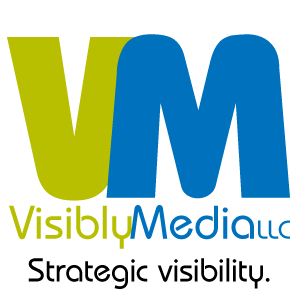It depends on your project! If you’re creating a black/white newspaper ad or printing for, say, Staples or FedEx-Kinkos, 150 dpi (dots per inch) will work fine. If you’re creating a four-color (CMYK) ad for a newspaper or magazine or sending your project to a professional print shop, your resolution should be set to 300 dpi. Let’s say you’re creating a very large vacancy graphic for your storefront; you may be able to use 72 – 96 dpi.
Before you start any design project, it’s best to interview several print shops in the area to make sure they can do the work you need. Once you decide on the printer, ask them what file format and resolution they need. The staff will be happy to help you get the answers you need.
In a word, no! The decision is completely up to you. However, it’s best to not put all your eggs into one basket, as the saying goes. If you depend on just social media to advertise/market your business and then decide to attend a networking event, you won’t get much business if you don’t even have a business card. Even if it’s just industry tips, make sure the prospect walks away with some kind of “leave behind” marketing piece. Also, to assume everyone is using the internet similar to the way you do may not be a wise assumption.
QR codes, for the most part, saved the printing industry from extinction (for now) by giving us a reason to scan an image. We recommend our clients create a QR code for an actionable landing page — a page with either a short lead capture form or an offer. Lead your customer(s) to his/her next steps — QR codes are a great use for this! We can offer a suggestion or two as to the mobile app you’ll need to scan these codes with your phone’s camera; contact us for a sit-down appointment.
Most print shops prefer a .PDF (Portable Document File) format; it will embed a copy of your fonts and images into your file and doesn’t lose the formatting, unlike Microsoft Publisher or Word which are version-dependent. You should also save your file as a high-resolution (at least 300 dpi – dots per inch) four-color .JPG file. Either format can be emailed or uploaded to the printshop of your choice. We recommend you DO NOT send original files to any print shop unless it is absolutely necessary. The person who has the original files has the rights to edit all aspects of your project; be absolutely certain of the person to whom you allow this privilege.
NOTE: If you’re purchasing vacancy window graphics, the print shop will have different requirements for both color and resolution.
Most printers won’t accept a Microsoft Word or Publisher file (or anything Microsoft) because using the file depends on several factors:
- Does the printer have the same version of MS Word or Publisher you have? If not, your copy can skew out of alignment very easily.
- Does the printer have the same fonts you have? This is key because Microsoft is not capable of embedding fonts in a .PDF file.
- Does the printer print only in four-color (CMYK)? If so, you’re out of luck; Microsoft documents only use three-color (RGB).
- Does the printer need a high-resolution file? If so, you may be out of luck again. Around 2012, as Microsoft became more readily used for professional printing, versions started including a way to change the resolution of images; Depending on your version, this may not be so easy to find. Sometimes Microsoft will compress the file resolution as it creates your .PDF file, which may result in fuzzy images and text.
It depends on your project! If you have a business card, which is usually sized 3.5″ x 2″, you won’t have room for more than just one image, while a large tabloid-size ad for your newspaper may allow several images, similar to real estate ads. The same can be said for text. “Less is more” is still critically important!
As you design your marketing piece, ask yourself these questions:
- For whom am I creating this marketing piece? (i.e., business card, door hanger, flier, etc.)
- What do I want someone to do? (i.e., call, email, follow a link to a webpage or form, etc.
- What are three or five (3 – 5) key pieces of information do I want people to read? (i.e., who, what, when, where, why, how)
- What is the result I am expecting? (review point #2)
They key is in both balance and knowing your audience.
Technically, yes, they can be. If something is printed, technically it is published. However, publishing involves more than just printing. If you have something published, it’s usually something printed within a specific timeframe, specific quanities, and recurs according to a schedule, and is typically bound in some format. If you have something printed, you can walk in to a Staples or FedEx-Kinkos and have your file(s) ready on a thumb (flash) drive or upload from a cloud storage, and request (or self-print) a set of copies.
An example of printing would be 100 copies of a promotional flier for local businesses or residents to introduce your business. An example of publishing would be a newspaper, magazine or periodical, or a book/novel.
It depends on your project. A business card is a very different size from a half-page magazine ad, as an example. We work within an eighth-inch (1/8″ or .125) margin on all four sides. For example, if you need business cards ordered, these are typically 3.5″ wide X 2″ tall (or vice-versa); the eighth-inch (1/8″ or .125) margin is added to all four sides, making the physical size of your artwork 3.625″ wide X 2.125″ tall.
Yes, please! If you’re just sending over camera-ready artwork, our system doesn’t allow us to proofread it first for accuracy, or make sure fonts (typefaces) are embedded or outlined. If you work with us to design your project, we will proofread and turn your fonts to outlines for consistency and clarity. If you have any questions about your file before you send it over, please email info@visiblymedia.com and we will help you out.
Professional printing has always used a four-color, or CMYK, format. CMYK breaks down like this: C=cyan, M=magenta, Y=yellow, K=key color for contrast (typically black values). Having said this, there are some online printshops using the three-color, or screen/web/RGB format. RGB breaks down as: R=red, G=green, B=blue. Check with the printshop to find out what color values they prefer you to set up.
No. Facebook doesn’t allow a user’s personal profile to act like a business page. If and when you are caught, you could lose your personal profile and not get it back, along with your contacts. After some time has passed, Facebook may allow you to create a new profile, but you will not get your previous contacts back. An exception may be made for certain industries, such as real estate, authors, or coaching, but Facebook should be consulted first.
A Facebook personal profile is what a user creates when they first create their account. A Facebook profile can have followers or friends, or both. You can message a profile whether or not you are connected. Once you build a Page, you can have someone help you manage it, but you should be directly connected (friends). You can’t boost a post or buy an ad. You can create a group, invite members to join, and manage it alone or assign moderators to help.
A Facebook Page is used by a business for promoting the business, celebrity, brand, cause, or politician. A user can only create a Page after creating the personal account. A Page can boost a post or buy an ad. A user can access the Meta Business Suite and schedule posts and/or Stories to either their Facebook Page or Instagram account. A Page can create a group, connecting it to the Page.




